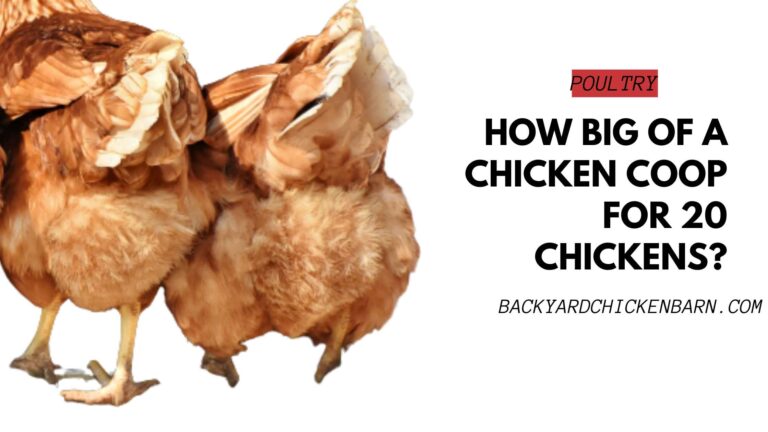The Best Paint for the Inside of a Chicken Coop
Stepping into my backyard, the clucking of hens greets me, and as I approach my chicken coop, the pride I feel is unmatched. Beyond just a shelter, it’s a haven I’ve crafted for my chickens. One of the key aspects of ensuring a healthy and clean coop environment is the paint on the inside. But how do you choose the right one?
To answer your question directly: The best paint for the inside of a chicken coop is non-toxic, easy to clean, and protects against moisture. This ensures the health and safety of the chickens while also prolonging the life of the coop itself.
Now, let’s dive into the details and some product recommendations.
1. Why is paint choice important for chicken coops? The inside of a chicken coop can be a bustling place. From nesting to foraging for food, chickens are always on the move. The paint should withstand their scratching and pecking, making durability essential. Moreover, the right paint can prevent mold growth, deter pests, and make cleaning easier.
2. What qualities should one look for in coop paint?
- Non-toxic: Chickens tend to peck at walls, so it’s crucial the paint isn’t toxic.
- Moisture and mold resistance: This prevents the buildup of harmful fungi or bacteria.
- Easy to clean: With chickens come messes. A paint that’s easy to clean helps maintain hygiene.
3. Top 5 Paints for Inside a Chicken Coop
- Benjamin Moore Natura™ (Buy on Amazon): This paint is a winner in the non-toxic category. It has zero VOCs and gives a durable finish, making it perfect for coop interiors.
- Behr Premium Plus Ultra Exterior Paint & Primer (Buy on Amazon): While technically an exterior paint, its mold and mildew resistant finish is what you want inside a coop. Its stain-blocking properties make cleaning a breeze.
- AFM Safecoat (Buy on Amazon): This brand focuses on minimizing toxic emissions. Their paints are durable and almost entirely free from harmful chemicals, ensuring a safer environment for your chickens.
- ECOS Paints – Eggshell Pet Dwellings Paint (Buy on Amazon): Tailored for pet habitats, this paint is free of VOCs, has an anti-microbial finish, and stands up against regular wear and tear.
- The Real Milk Paint Co. – Pure Tung Oil (Buy on Amazon): If you’re looking for a natural finish, tung oil can be a great choice. It’s water and alkali resistant, and when applied, it offers a protective layer that’s non-toxic.
4. Painting Tips Before you start painting, clean the coop’s interior and ensure it’s dry. Apply a primer if your chosen paint requires one. Two coats of paint are generally recommended for the best finish, but always refer to the paint can’s instructions.
Conclusion Your chicken coop is not just a shelter; it’s a home for your feathered friends. Using the right paint ensures they remain healthy, and the coop stays in top condition. Whether you go for a traditional paint or a more natural finish, always prioritize non-toxicity and durability. Happy painting!
FAQs on Best Paint for Inside Chicken Coop
- Why is it important to choose the right paint for a chicken coop?
- The right paint ensures a healthy environment for the chickens and prolongs the life of the coop.
- What should be the primary quality of coop paint?
- The paint should be non-toxic, considering chickens might peck at the walls.
- Is mold resistance essential in coop paint?
- Yes, mold-resistant paint prevents the buildup of harmful fungi or bacteria, ensuring a healthier environment.
- How does paint help in cleaning the coop?
- A paint that is easy to clean allows for better maintenance of hygiene in the coop.
- Why is Benjamin Moore Natura™ recommended for coop interiors?
- It’s non-toxic with zero VOCs and offers a durable finish suitable for coops.
- Can exterior paint be used inside the coop?
- Yes, some exterior paints, like the Behr Premium Plus Ultra Exterior Paint & Primer, offer mold and mildew resistance, making them suitable for coop interiors.
- What makes AFM Safecoat suitable for chicken coops?
- AFM Safecoat minimizes toxic emissions and is nearly free from harmful chemicals, ensuring safety for chickens.
- Is there a paint tailored for pet habitats?
- Yes, ECOS Paints – Eggshell Pet Dwellings Paint is designed specifically for pet habitats and is VOC-free with an anti-microbial finish.
- Can natural finishes be used instead of traditional paints?
- Absolutely! Tung oil from The Real Milk Paint Co. is an excellent natural finish that offers a non-toxic protective layer.
- How many coats of paint are recommended for the coop’s interior?
- Typically, two coats are recommended, but always check the paint can’s instructions.
- Is a primer necessary before painting?
- It depends on the paint. Some might require a primer, so always refer to the product’s guidelines.
- Are all the recommended paints VOC-free?
- Most are, like Benjamin Moore Natura™ and ECOS Paints, but always check the product details to be sure.
- How does paint deter pests in the coop?
- Certain paints have properties that deter pests, and a well-painted coop can prevent crevices where pests might reside.
- How often should the inside of a chicken coop be repainted?
- It depends on the wear and tear, but generally, once every few years should suffice.
- Can I mix paints to get my desired color?
- While mixing is possible, ensure both paints are non-toxic and compatible. Always test a small area first.
- Do the recommended paints have an odor?
- Most of the suggested paints are low-odor or odor-free, especially those with zero VOCs.
- How long should I wait before introducing my chickens after painting?
- Wait until the paint is fully cured, typically a few days, ensuring no fumes remain.
- Does paint protect against moisture?
- Yes, especially those that are moisture and mold-resistant.
- Is it safe for chickens to ingest paint?
- It’s best to prevent ingestion, but using non-toxic paint reduces the associated risks.
- Which paint is best for a wooden chicken coop?
- All the recommended paints work well on wood, but always check the product’s specifications.
- Can paint help in insulation?
- While paint primarily offers a protective layer, certain paints might provide minimal insulation. However, for substantial insulation, other methods are recommended.
- How does tung oil differ from regular paint?
- Tung oil is a natural finish that provides a protective layer, while regular paint offers color and protection.
- Can I use regular household paint for my coop?
- It’s essential to use non-toxic paints for coops, so always check the paint’s properties before using it.
- How do I clean the coop before painting?
- Ensure it’s free from dirt, grease, and any flaking paint. A mild detergent can help.
- Does paint improve the coop’s aesthetics?
- Definitely! A fresh coat of paint can make your coop look vibrant and new.
- How do I ensure uniform paint coverage?
- Using a primer and applying even strokes with a quality brush or roller helps in uniform coverage.
- Which paint is best for a high-humidity area?
- Opt for moisture and mold-resistant paints like Behr Premium Plus Ultra Exterior Paint.
- Do the recommended paints come in various finishes?
- Yes, most paints come in various finishes, from matte to glossy.
- What’s the drying time for these paints?
- Drying times vary, but typically, they dry to the touch in a few hours. Always check the product label.
- Is it okay to paint the coop in winter?
- Ideally, paint in warmer months. Cold can affect the paint’s drying and curing time.
- Do I need to sand the coop before painting?
- Sanding can help in better adhesion, especially if there’s old paint or a glossy finish.
- Can paint help in reducing coop odor?
- While paint can seal some odors, proper cleaning and maintenance are vital for odor control.
- Does paint affect coop ventilation?
- Paint doesn’t inhibit ventilation, but ensure vents aren’t accidentally painted shut.
- What safety measures should I take while painting?
- Use gloves, masks, and ensure the area is well-ventilated.
- Can I use a paint sprayer for the coop?
- Yes, but ensure the paint is suitable for spraying and take necessary precautions.
- How long does the paint last on the inside of the coop?
- With proper care, it can last several years.
- Which paint is the easiest to clean?
- Paints like Behr Premium Plus Ultra have stain-blocking properties making them easy to clean.
- Can I use the same paint for both the inside and outside of the coop?
- While it’s possible, ensure the paint properties suit both environments.
- How do anti-microbial paints help?
- They inhibit the growth of mold, mildew, and other harmful microbes, ensuring a healthier coop.
- Are these paints safe for other pets?
- Yes, especially those tailored for pet habitats, but always refer to the product’s guidelines.


